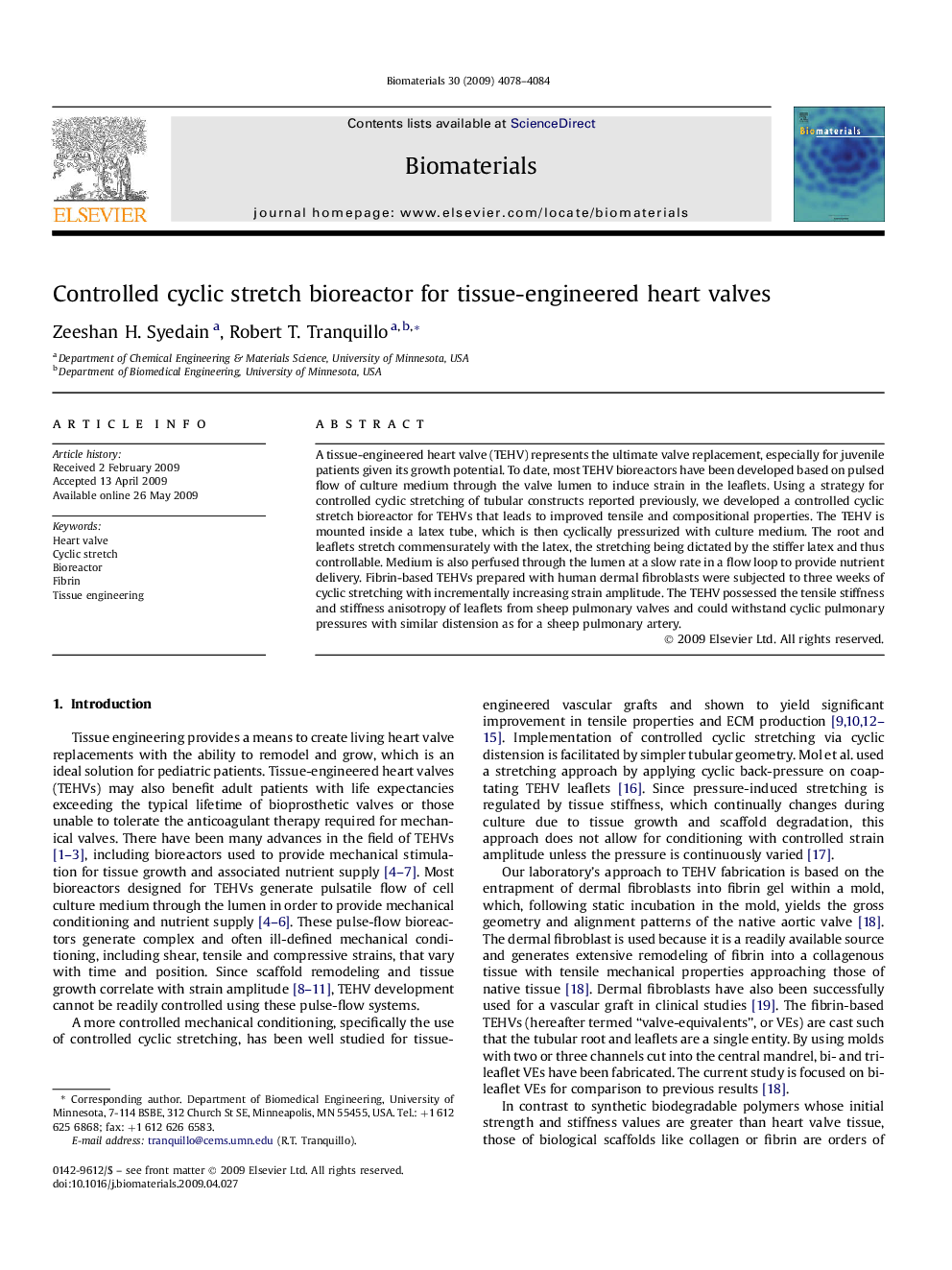| Article ID | Journal | Published Year | Pages | File Type |
|---|---|---|---|---|
| 9931 | Biomaterials | 2009 | 7 Pages |
A tissue-engineered heart valve (TEHV) represents the ultimate valve replacement, especially for juvenile patients given its growth potential. To date, most TEHV bioreactors have been developed based on pulsed flow of culture medium through the valve lumen to induce strain in the leaflets. Using a strategy for controlled cyclic stretching of tubular constructs reported previously, we developed a controlled cyclic stretch bioreactor for TEHVs that leads to improved tensile and compositional properties. The TEHV is mounted inside a latex tube, which is then cyclically pressurized with culture medium. The root and leaflets stretch commensurately with the latex, the stretching being dictated by the stiffer latex and thus controllable. Medium is also perfused through the lumen at a slow rate in a flow loop to provide nutrient delivery. Fibrin-based TEHVs prepared with human dermal fibroblasts were subjected to three weeks of cyclic stretching with incrementally increasing strain amplitude. The TEHV possessed the tensile stiffness and stiffness anisotropy of leaflets from sheep pulmonary valves and could withstand cyclic pulmonary pressures with similar distension as for a sheep pulmonary artery.
